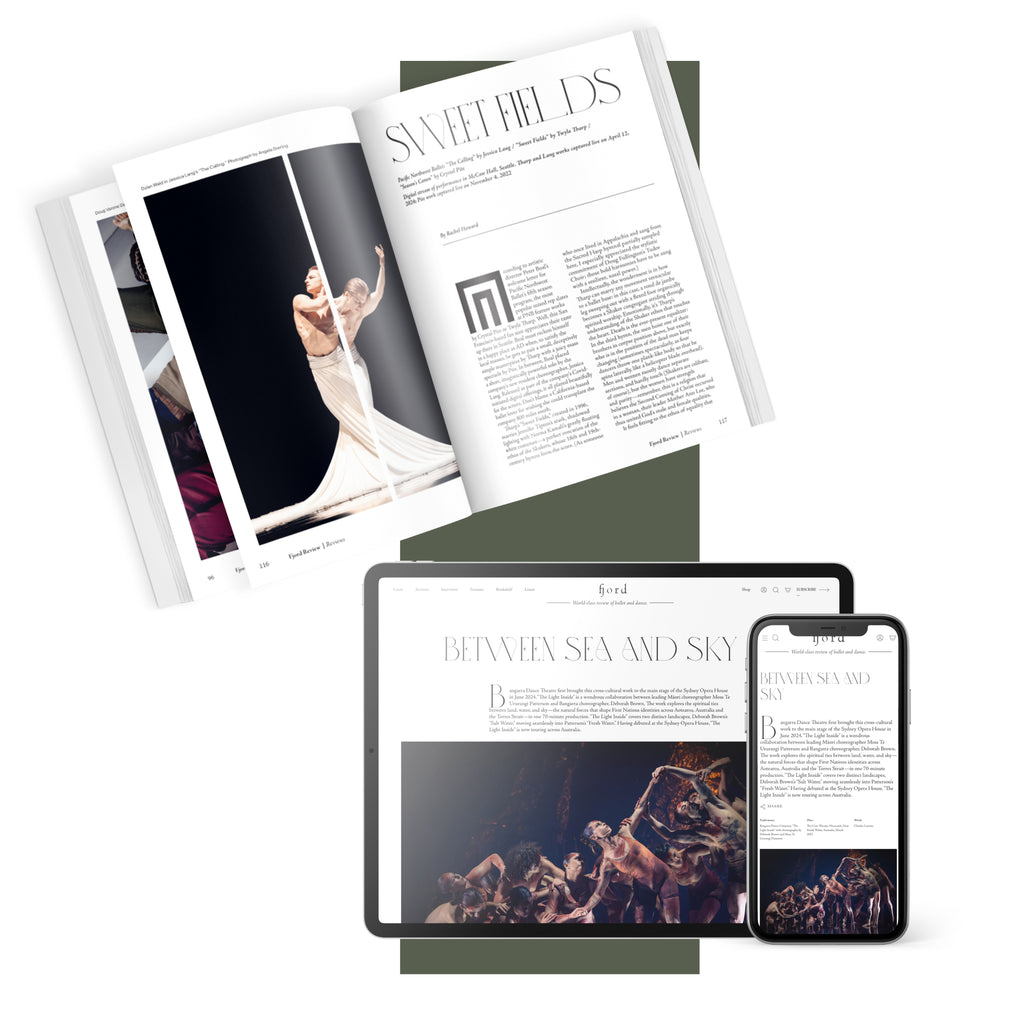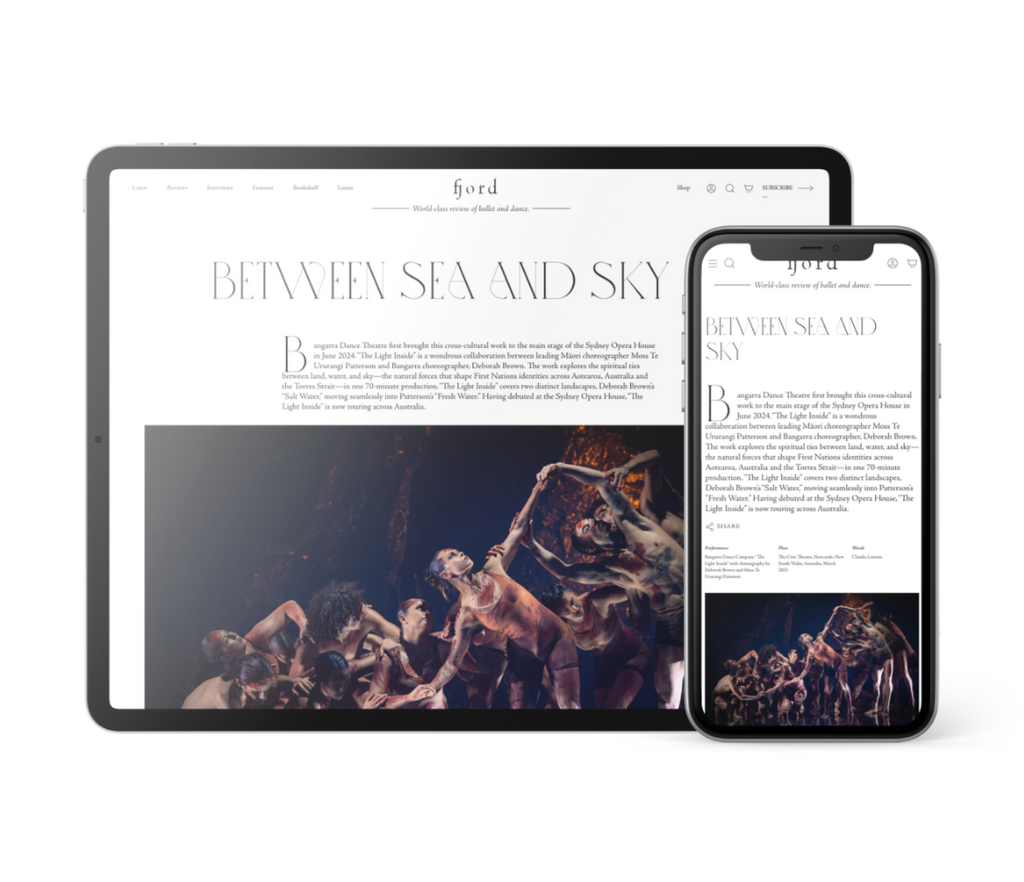Shorts 1: Framing Bodies gathers the festival’s nine shortest films, including Maldonne’s floral dressed women, Hiphop Purée a cheeky three-minute satire by Australian Ryan Renshaw, and body landscapes by cari ann shim sham, US, whose breast cancer self-portrait multiplies much the way of cancer cells.
Shorts II: Duets includes a personal favorite, True Love Will Find You in the End by Bret Easterling, US, that progresses through a series of hilarious and sometimes fantastical vignettes that take place onstage, in nature, an urban laundromat, and in the imagined space of animation, to reveal a touching platonic queer friendship. In Facing, directed by Minos Papas and choreographed by Jie-Hung Connie Shiau, US, the camera moves a contemporary pas de deux to several different locations. The couple continues their duet—tension between the two growing into abuse—without regard to changes in place: a loft apartment, an abandoned building, beneath a freeway, and beside a boat harbor. Promenade - A - Deux by Hannah Camarata, US, is a visual poem rich with imagery inspired by the mating dance of the scorpion.
Cinematic Invention features four shorts that push the boundaries of storytelling. Purgatorio, by Auden Lincoln-Vogel, Stephanie Miracle, and Philip Rabalais, US, for instance, takes place on a racquetball court, complete with the sound of sneakers squeaking on a polished gymnasium floor. The film plays with space and orientation by making the dancers appear to scale walls and hang upside down. It mimics a filmstrip in the way it scrolls vertically, frame by frame. The dancers’ bright red athletic wear bounces off the stark white walls. Permutations, by Claire Marshall, Australia, delivers a David Lynchian narrative about two sisters who live parentless in a suburban home and are visited by their milkman and a neighbor. The screen is split into four squares, the scenes shot from different angles. Rather than direct our gaze, the filmmaker leaves us to make what we will of the story, thus fracturing the narrative into multiple points of view.











comments